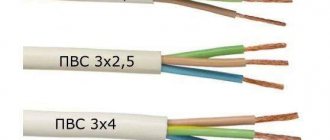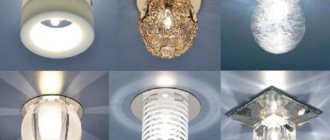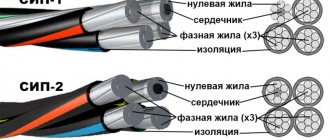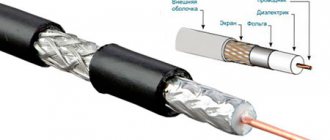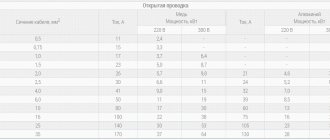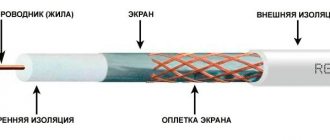Types of network cables for the Internet
The list of main types of network cables:
- coaxial;
- fiber optic;
- twisted pair
The design of a coaxial wire includes a conductor with a dense insulating coating, a copper or aluminum braid, and an outer insulating layer. In addition to connecting to the network, Internet products are used to translate signals from antennas and television satellites to build high-speed digital networks (cable TV).
RJ 45 pinout – Twisted pair crimping: diagrams, connection methods
The configuration of the wire connectors is different:
- The BNC connector is attached to the ends of the cable, providing connection to the T-connector and barrel connector.
- BNC barrel connector is designed for connecting damaged elements or extending the wire to expand the range of the network or connect additional electrical equipment.
- A BNC T-connector is a tee used to connect computer equipment to the main network line. The wire has 3 connectors (1 is intended for output to a centralized network, 2 connectors are necessary for connecting a local system).
- The BNC terminator is designed to act as a ground plug, preventing the signal from propagating outside the local line. The connector is required for stable operation of network connections that occupy a large area.
To create local lines, a twisted pair network cable is used. The products include pairs of twisted copper conductors with an insulating layer. A standard wire consists of 4 (8 conductors) or 2 pairs (4 cores). According to standards, there should be no more than 100 m between devices connected by cable. The wire is available standard or with protection. To work with the cable, an 8P8C connector is used.
Before choosing a twisted pair Internet cable, you need to determine the subtype based on the characteristics of the outer layer (thickness, presence of reinforcement, composition). The UTP wire with a plastic outer layer is not protected and is produced without grounding. F/UTP, STP, S/FTP products are manufactured with shielding.
Twisted pair cable markings reflect categories based on the color of the insulating layer:
- gray (used in the interior spaces of buildings);
- black (used to designate products coated to protect against precipitation and electromagnetic radiation, used for outdoor structures);
- the orange hue is used to indicate non-flammable polymer compounds.
Fiber optic cable is an improved wire for building network lines. The product consists of plastic fiberglass light guides with plastic protection. Cable products are characterized by high speed of information transfer and are resistant to line interference. The wire can connect systems over long distances. Products are divided into single-mode and multimode.
Fiber optics use different types of connectors (FJ, ST, MU, SC). The wires are inexpensive, look aesthetically pleasing, but require the purchase of additional equipment and are difficult to install. The products are used to form large-scale network systems and create access to the Internet at high speed.
Copper conductors in an Ethernet cable are produced:
- whole;
- twisted.
Solid conductors are strong, reliable, durable, but less flexible. The products are intended for stationary indoor systems or short installations on external structures. Stranded products consist of thin copper wires twisted together. The cables are durable, flexible, and are designed for placement in work spaces and in places where objects need to be moved.
Types of twisted pair cable
What kind of twisted pair cable is needed to connect to the Internet? Twisted pair cables are divided into types:
- monolithic;
- stranded;
- shielded;
- unshielded.
Monolithic (one core) is used for laying in the walls of a building and installation to the terminal equipment of a communication line, for example, to an information socket on one side (apartment) of the communication channel equipment (provider). It is not intended for connecting network devices due to the impossibility of bending due to the single thick core.
Multi-core twisted pair cable is an ideal solution for connecting devices (computers, routers, TVs, switches, printers) and connecting them to an Ethernet socket. The small diameter of the cores allows you to bend and twist the cable as required when connecting devices in the apartment.
It is impossible to use stranded twisted pair wire in an information socket for two reasons:
- The wires break easily when screwed into the connector.
- Signal attenuation in multi-core twisted pair cables occurs at a distance of more than 100 meters.
There are several types of twisted pair cable shielding, which are clearly visible in the photo.
For laying cable in an apartment, a four-pair U/UTP solution is sufficient. UTP or U/UTP means that security is not provided. The F prefix or simply FTP means that there is one external common screen wrapped around four pairs.
Twisted pair cable marking
The following markings are generally accepted, indicating the method of organizing shielding:
- UTP – cheap unshielded cable (may be designated U/UTP);
- FTP – a cable in which all pairs had a common shield (F/UTP);
- S-FTP – common double shield for all pairs with foil-coated aluminum core and tinned copper wire conductors (SF/UTP);
- STP – presence of a screen for each pair (U/FTP);
- F/FTP – separate screens for all pairs plus a common screen made of aluminum foil;
- S/FTP – separate screens for all pairs plus a common one made of tinned copper wire.
Types of cable shielding depending on marking
In general, a screen protects a cable from random and systematic interference that distorts the signal; it is necessary to prevent loss of information. Types of shielding indicate different levels of data protection. They largely determine the cost of the finished product.
Types of twisted pair
In addition to markings indicating the presence and method of organizing the screen, there are other designations used by manufacturers to indicate certain technical features of their products:
- Number of cores: solid – single-core cable, patch – multi-core. Monocores are cheap to produce, so they are the most common. Multicore products are used for complex network topologies in places of multiple bends. They are mainly used in the production of patch cords (a section of cable of a given length terminated with jacks for connecting devices).
- Core diameter. The range used is 0.40–0.64 mm. Cable products of categories 5–6 are made from conductors with a diameter of 51 mm and are designated 24AWG (American marking standard). A budget, often uncertified cable is made from 0.40–0.50 mm wire - for an apartment, the choice of such a twisted pair would be quite justified.
- Number of pairs When building complex communication systems, their number can reach thousands, but for computer networks the standard is 4 pairs (the marking accepted in the USA is 4x2x0.51). The use of all eight cores is required to build gigabit networks; for home use with a throughput of up to 100 Mb/s, two pairs are sufficient. And although such a cable is cheaper, usually in any case they purchase the eight-core version. Two pairs are used for arranging intercoms and alarm systems.
Twisted Pair Contents
We should also talk about marking by shell type:
- PVC – polyvinyl chloride sheath, used mainly for cheap cables;
- PP – polypropylene sheath for cables that can be exposed to high temperatures (up to 140° C);
- PE – a sheath made of dense polyethylene, used for external laying of cables;
- FR – fire-resistant category cable (ability to work in case of fire for a certain time, from 30 to 180 minutes);
- LS – a shell made of a material characterized by low smoke emission during fire;
- ZH is a material that does not emit toxic halogen gases when burned;
- B – cable with an armored sheath in the form of an enveloping steel tape.
There are also modifications of the cable with steel cable, which are used for aerial laying of networks between houses.
Coaxial wire
The very first cable created for connecting the Internet. Patented in 1880, used for transmitting high frequency signals. In modern times it is rarely used, but it is impossible to completely exclude it.
The device looks like this:
- It consists of a central conductor.
- The conductor is surrounded by a dense layer of insulation.
- Next comes copper or aluminum braiding.
- The outside is covered with a rubber insulating layer of several millimeters.
It is divided into two types: thick and thin. Each variety is used depending on the application environment. The specificity of such a wire is increased flexibility and speed of signal attenuation. Therefore, the transmission speed is not designed for long distances, reaching a maximum of 10 Mbit/s.
Nowadays the coaxial type is not used for the Internet due to its too low speed. The only area of application is cable television. However, it is also gradually disappearing, as modern routers allow the installation of wireless television.
Types of Internet cable connectors for coaxial wire represents a large collection consisting of:
- A BNC connector installed at the ends of a wire to connect to other connectors.
- BNC T-shape. This is a tee to connect the device to the main line. Contains three connectors, one of which is required for a network card.
- A Barrel-type BNC is required if the connection between trunks is broken or the length needs to be increased.
- BNC terminator. This is a plug that blocks the propagation of the signal. Two grounded terminators are required for the network to function properly.
Categories
The most widely used category is 5e. It is this ethernet cable that connects the equipment of the provider and the apartment router. The same cable connects various devices to the router, such as a personal computer, TV, game console, etc. But there are actually many more categories. Some are no longer used due to insufficient bandwidth, while others, on the contrary, are not used in everyday life due to too high bandwidth and, therefore, high cost.
Wire is divided into categories based on the number of cores, the number of turns, and the frequency range used. These parameters will determine the data transmission speed of the twisted pair and the maximum distance it can transmit it without losing the signal.
- Cat.1 – 1 pair operating at a frequency from 0.1 to 0.4 MHz. Used for analog telephone line and Internet access via modem;
- Cat.2 – 2 pairs operating at frequencies from 1 to 4 MHz;
- Cat.3 – 4 pairs operating at 16 MHz. Used for Ethernet standard 10BASE-T (speed 10 Mbit/s) and 100BASE-T4 (100 Mbit/s). The specified speed is guaranteed for a cable length of up to 100 meters;
- Cat.4 – 4 pairs at 20 MHz. Suitable for Token ring and 10BASE-T, 100BASE technology. The speed using such outdated technology cannot be higher than 16 Mbit/s. Now no longer applicable;
- Cat.5 – 4 pairs at 100 MHz. Used in the 100BASE-TX standard, 100 Mbit/s. Maximum length – 100 meters;
- Cat.5e – 4 pairs operating at 100 MHz according to the 1000BASE-T standard, provides speeds up to 1000 Mbps. The maximum length of a category 5e twisted pair cable to maintain the specified speed is no more than 100 meters;
- Cat.6 – 4 pairs. Frequency 250 MHz. Used in Fast Ethernet and Gigabit Ethernet (10GBASE-T) technologies. Capable of providing data transmission up to 10 Gbit/s at a distance of up to 55 meters;
- Cat.6e – 4 pairs at 500 MHz. used in technology (10GBASE-T) and provides speeds of up to 10 Gbit/s at a distance of up to 100 meters;
- Cat.7 – 4 pairs, operating frequency is 600 MHz. Used in technology (10GBASE-T). Speed 10 Gbit/s with cable length up to 100 meters. Refers not to UTP, but to S/FTP. It uses not only a common screen, but also a screen for each pair;
- Cat.7a – 4 pairs, operating frequency 1200 MHz. Used in Gigabit Ethernet (40GbE, 100GbE) 40 Gbit/s up to 100 meters, and 100 Gbit/s up to 15 meters.
Benefits of fiber optics
Fiber optic cable is a special wire made of glass and plastic. Thanks to it, the beam is transmitted using its reflection. There are single-mode and multi-mode cable fibers. In the first case, the beam propagates in one copy, and in the second case, in multiple copies, when each beam (mod) is introduced into the cable at a certain angle. Data transmission using this technology was first carried out in the 1950s.
What are the differences between 3G and 4G networks: features, advantages and disadvantages. Among the features of this type of wires, the following can be identified, which are also advantages of the technology:
- Fiber optic lines are not affected by electromagnetic waves and fields, which means that in any conditions you can fully experience the good quality of communication and its reliability;
- The data transmission speed over optical fiber is high-speed. This makes it possible to exchange information many times faster than via any type of iron wires;
- The absence of electromagnetic radiation, which makes it possible to increase the security of this type of data transmission. Optical cables cannot be used for wiretapping. To do this, you need to completely destroy its structure, which will be noticed by low signal speed and various types of interference;
- Due to the technology used, the cables do not require a large number of relay points, which reduces internal interference when transmitting binary information.
Why twisted pair?
Several types of Internet cables are used in the network infrastructure:
- Coaxial – used in radio communications, automation systems, security systems, video surveillance and television broadcasting. It works on the principle of transmitting radio frequency electrical signals.
- Fiber optic - used to transmit information over vast distances at a higher speed than in radio-electronic communications. It works on the principle of transferring light within itself, using total internal reflection.
- Twisted pair - used in cable systems, telecommunications and computer networks. It works on the principle of connecting two nodes and using separate media to transmit information in different directions.
A twisted-pair cable consists of several pairs of insulated conductors, twisted together with their own twist pitch, covered with polypropylene or polyethylene insulation. If the cable is of high quality (more on this below), the insulation consists of foamed polyethylene and Teflon. This protects against high dielectric losses and during operation at elevated temperatures.
Additionally, twisted pair cable of the fifth category can use a protective shield against electromagnetic interference, and also use a “breaking thread” for the convenience of tearing the insulation when pulling, and for protection against tearing. The core of the conductor is a monolithic copper core (0.4-0.6 mm) or several pairs of cores in a bundle.
Due to its low cost and ease of installation, twisted pair cable is widely used to equip office and apartment buildings with local networks and the Internet.
At the ends of the wire, an 8P8C plug is used (popularly the name of the RJ45 standard has stuck, which is a little incorrect) to connect network devices in local LAN networks, that is, computers, routers, switches, hubs and others.
It is easy to recognize the purpose of the cable by the color of the insulation:
- black – adapted to the influence of external factors (air, dampness);
- orange - indicates the resistance of the insulation material to high temperatures and combustion;
- light gray - used for laying inside buildings, houses, apartments, offices.
How much did you save?
If you buy an Internet cable in a store, the cost is about 150 rubles per meter, that is, two meters will cost 300 rubles!
If you crimp it yourself - a connector (5 rubles, we need two pieces), a 2-meter cable (25 rubles) = 35 rubles - which is almost 10 times cheaper! Even if you buy scissors for 200 rubles, you will still save 65 rubles, and then there will only be profit, you can even earn extra money.
That's all, this is such a big but necessary article. Read our construction site.
Internet connection using fiber optic
The most widespread Internet in the Russian Federation, the network of which operates on the basis of optical fiber, is provided by the provider Rostelecom. How to connect fiber optic internet?
First you just need to make sure that the optical cable is connected to the house. Then you need to order an Internet connection from your provider. The latter must provide connection data. Then you need to configure the equipment.
It is done like this:
- After installing the optical fiber and connecting the equipment that ensures operation in optical passive networks, the provider’s employees perform all subsequent configuration independently.
- First of all, install the yellow cable and socket as shown in the figure below.
- You can have your own Wi-Fi router; you don’t have to purchase a router from Rostelecom. Wi-Fi is connected to a fiber optic cable, an optical terminal and a main cord, through which the router is connected to an optical outlet.
- It is necessary to choose the most ventilated place possible for installing all equipment. The installer from the provider company should indicate exactly where the network elements need to be installed.
The terminal is equipped with a special socket that allows you to connect to a computer and connect the router to the Internet. In addition, the terminal has 2 additional sockets that allow you to connect an analog home telephone to a fiber-optic connection, and several more sockets are provided for connecting television.
Methods for determining the quality of a twisted pair cable
To determine which twisted pair cable is best for the Internet, experts advise paying attention to the brand name. Among European manufacturers, it is worth noting Reichle De-Massari (Switzerland), Mollex (USA) has a good cable. The remaining brands found in Russia are mainly from China (or Taiwan), although the labeling may be different if the customer so desires.
The second criterion we pay attention to is the material used to make the cores. Copper is the standard for twisted pair, but recently you can often find bimetallic conductors, which are inferior in quality to copper ones. They are steel (CCS) or aluminum (CCA) wire clad with a thin layer of copper.
Cable composition: twisted pair
Such products are more affordable, but have a number of disadvantages that are not typical for pure copper cores:
- such conductors are not fixed securely enough in the connectors, forming a so-called “floating” contact;
- there is a limitation on the length of bimetallic twisted pair sections (up to 25 meters at 100 meters for a classic copper cable);
- When a twisted pair is inserted into a connector, significant fluctuations in wave impedance are possible, which affects the stability of signal transmission to the end device;
- in case of damage or the need to re-lay the cable, one cannot count on maintaining the previous characteristics;
- for cables with a steel core, the maximum information transfer speed will be within 10 Mb/s, for conductors with an aluminum core – up to 100 Mb/s.
It’s quite simple to make sure that you have a copper-plated vein in front of you. It is enough to try to scrape off the top layer with a knife. If silvery metal appears under the copper, you can rest assured that this is a twisted pair of bimetallic conductors. By the way, it is not possible to solder a copper-plated cable with a regular soldering iron. However, most Internet service providers use this cheaper type of product when laying the cable from the panel to the end user.
Finally, the quality of a twisted pair can be judged by such a characteristic as the thickness of the cores. The larger the diameter, the better the quality of the cable; for well-known manufacturers it ranges from 0.51 mm. A core thickness in the range of 0.4–0.5 mm indicates a low-quality product.
Most often, thinner cores can be seen on a pair of brown and blue colors, since they are not used for 100-Mbit networks.
And the last criterion for quality control is the availability of a certificate. Large manufacturers certify their products, but small ones do not, because it is expensive.
What types of veins are there?
Several core options are used in network wires:
- copper;
- copper-plated
Types and categories of optical fibers and cables. Singlemode and multimode
By type and purpose, single-mode and multimode optical fibers (as well as cables consisting of them) are distinguished.
- Single-mode fiber optic threads transmit only 1 light signal (one mode). The diameter of their core is 7-10 microns (in communication systems - 9 microns), and the narrower it is, the lower the dispersion and the less attenuation of the beam. The bandwidth of a single-mode cable is lower than that of a multimode cable, but it is capable of transmitting data over longer distances.
- Multimode fibers carry multiple signals simultaneously. Their cores have a cross section several times larger - 50-62.5 microns, which creates conditions for increasing the level of dispersion and faster pulse attenuation. These types of cables are designed for relatively short distances.
Fiber optic cables, which are used to build computer networks, are divided into 7 classes:
- OS1 is a single mode with a 9 micron core.
- OS2 is a broadband single mode with a 9 micron core.
- OM1 is a multimode with a 62.5 µm core.
- OM2 – multimode with a 50 µm core.
- OM2 plus – momomod with a 50 µm core for laser sources (improved).
- OM3 is a high-speed multimode with a 50 micron core.
- OM4 is an optimized multimode with a 50 µm core.
Single-mode cables are designed for long-distance intercontinental, interstate, intercity and intracity backbones (usually 10 km or more), as well as for connecting remote equipment nodes of telecommunications companies and data centers. That is, they are used where continuity (or a minimum number of connections) and increased line reliability are important.
Cables of this type are cheaper than multimode ones, but if you take into account the costs of the entire necessary set of equipment, then systems using single-mode transmission are more expensive.
Multimode cables are used to connect workstations and other end devices indoors to a network, for communication between floors and nearby buildings (up to 550 m). They are also used to equip additional communication lines in data centers.
To connect to the Internet, residents of multi-storey buildings most often use multimode cables of the OM3 and OM4 classes.
Fiber optic cables transmit data over distances of up to 40-100 km and support speeds of up to 100 Gbit/s. But these are only theoretically achievable values: the speed and quality of communication is affected by the category of cable and the equipment that processes the signal.
Number of cores
Twisted pair cable can be produced with 4 and 8 cores. To transfer according to the standard at speeds of up to 100 Mbit/s, you can use 4 cores, but to get more than 100 megabit/s - 1 Gbit/s, you will need all 8 cable cores.
Cable selection criteria
This cable has many characteristics, but only some of them are important for selection. These include: conductor category, core type, shielding method. Let's look at each of them in detail.
Criterion #1 - Internet cable category
There are seven categories of twisted pair cable—from Cat.1 to Cat.7.
Cords of different categories differ in the efficiency of the transmitted signal:
- The first category, Cat.1, has a bandwidth of only 0.1 MHz. Such a conductor is used to transmit voice data using a modem.
- Cat.2 category has a bandwidth of 1 MHz. The data transfer speed here is limited to 4 Mbit/s, so this conductor is considered obsolete and is almost never used.
- For Cat.3 , the frequency band is 16 MHz. Data transfer speed - up to 100 Mbit/s. Used to create local and telephone networks.
- Cat. 4 - cable with a maximum bandwidth of 20 MHz. Data transfer speed - no more than 16 Mbit/s.
- Cat.5 has a maximum bandwidth of 100 MHz and a maximum data transfer rate of 100 Mbps. Areas of application: creating telephone lines and local networks.
- Cat.5e has a bandwidth of 125 MHz. Speed - up to 100 Mbit/s and 1000 Mbit/s (for four-pair wire). This cable is the most popular when building computer networks.
- For Cat.6, the acceptable frequency band is 250 MHz. Transfer speed is 1 Gbit/s over a distance of up to 50 m.
- Cat.6a has a bandwidth of 500 MHz. Speed – up to 10 Gbit/s within a range of up to 100 m.
- Cat.7 has a bandwidth of 600-700 MHz. The speed of this wire for the Internet is up to 10 Gbit/s.
- Cat.7a . Bandwidth - up to 1200 MHz. Speed – 40 Gbit/s for a length of 15 m.
The higher the cable category, the more pairs of conductors it contains. Moreover, in each pair there are more pairs of turns per unit length.
Criterion #2 - type of cable core
The cable cores are divided into copper and copper-plated. The first type is considered to be of higher quality.
They use a cable with such a core for an extensive and fast network - more than 50 m. The second type is somewhat cheaper, and the losses in it are not so great.
Its core is an inexpensive cable with low conductivity. It is coated with copper, which has high conductivity. Since current flows through the copper side of the conductor, conductivity suffers only slightly.
When purchasing a copper-plated cable, you have to choose between two types - CCS and CCA . The difference between them is at the core. For CCS it is a steel conductor, for CCA it is made of aluminum. The second one is not much different from the copper one.
Installing a steel conductor can be difficult, since steel, as a not very elastic material, is susceptible to breakage.
Over a limited distance, the discrepancy between copper and copper-plated cable is not noticeable. If the distance is more than 100 m, a cable with an aluminum core simply will not transmit the signal.
The reason for poor commutation is that aluminum has a higher resistance than copper. As a result, the output current has insufficient power and the network components do not “see” each other.
Criterion #3 - cable shield
The shield is necessary to protect the conductor from electromagnetic noise from other cables. It must also compensate for the radiation of the electromagnetic field of the twisted pairs themselves.
If there are nearby power cables up to 380 V with a core cross-section of less than 4 square meters, one screen is required. In this case, the best option would be an FTP .
When it is expected to be adjacent to a conductor from 380 V with a core cross-section of up to 8 squares, a double screen will be required. A good option is F2TP .
The proximity of high-voltage cables from 1000 V with a core of 8 square meters requires the laying of both power and network cables in individual corrugations. Screen option - SF/UTP .
Such cables are not used in everyday life. Here, an unshielded cable belonging to category 5e UTP type .
Twisted pair lan cables come in round and flat shapes. On the cable sheath, every meter or foot (0.3 m) is marked, indicating the manufacturer, cable category, footage and other information. This allows you to determine the length of the laid line without a ruler.
So which is better - optics or copper twisted pair?
Nowadays, any large and even medium-sized Internet provider uses optical fiber in a number of segments of its networks. And vice versa: no matter how the provider lures you with a connection to the “fastest new generation system,” certain sections of its networks are traditional copper cable. It’s just that the rules are dictated by environmental conditions (in some places they are more suitable for copper, and in others for optics) and economic feasibility, and marketing is marketing.
No one can say for sure what type of highway the providers “The Bronze Horseman” and “Optical Illusion” connected your home to, so we will assume that their offers differ only in the way they connect subscribers inside apartments.
The table below compares the properties of fiber optics and twisted pair:
| Optical fiber | Copper twisted pair | |
| Theoretically achievable communication speed | OS1 – 40 Gbps OS2– 100 Gbit/s OM3 and OM4 – 100 Gbit/s | Up to 10 Gbps for Category 6 and 7 cables. |
| Maximum continuous line length | OS1 – 100 km OS2 – 40 km OM3 – 300 m OM4 – 125 m. | 100 m |
| Physical properties of the cable | Thin, fragile | Thick, flexible |
| Exposure to external influences | Excessive bending, pressure, certain types of radiation | Electromagnetic interference, atmospheric electricity, corrosive chemical environments, fire, unauthorized connection to read data |
| Compatibility with client equipment | Requires the purchase of special adapters | Compatible with any device equipped with RJ-45 jacks |
| Service | Requires special equipment and training | Requires minimal skills and knowledge |
| Price | High | Low |
Let's summarize:
- A fiber optic line is up to 10 times faster and has a much longer range than twisted pair, it is not affected by interference from electrical equipment and power lines, is durable and strong, does not burn, and does not lose its properties from moisture, acids and alkalis. Does not allow spy tapping or eavesdropping via inductive connection.
- A fiber-optic network is easier to disguise in the interior; it does not require the installation of wide, unaesthetic cable channels.
- Fiber optics is, although flexible, glass, and any glass can crack and crumble. Therefore, installation and modernization of such a network requires great care. If damaged twisted pair can be cut and connected by simple twisting, then to restore broken optics you need a special welding machine and the ability to handle it. And sometimes even minor damage to a fiber optic line requires its complete replacement.
- The main advantage of twisted pair is its low cost and ease of use. Most likely, you will not be charged any extra money for connecting to the Internet via a copper cable, but you will have to pay for optics, because they are expensive. A twisted pair cable with a universal connector can be immediately plugged into a computer - and the Internet will appear on it. For optics, you will again have to fork out for a special socket, modem (ONT terminal or router), and network adapters. And this is also not cheap.
Purely fiber optic networks inside houses and apartments are still very rare; most often they are made hybrid - partly optical, partly copper wire, partly wireless. The optics are usually connected only to the modem, and the end devices - computers, smartphones, smart TVs, etc. receive the Internet over the same twisted pair cable or Wi-Fi, because they are not equipped with light signal decoding modules. This means that no matter what super speeds your provider promises you, slow network segments will reduce it to nothing.
So, your choice is “The Bronze Horseman” if:
- You don't want to overpay for something you probably won't get. If your devices that consume Internet traffic operate on outdated Ethernet or Wi-Fi protocols, then optics will not make them faster.
- You often move your computer from place to place, you have a dog that likes to chew wires, or small children who grab everything. And if the cable is damaged, it’s easier for you to fix it yourself than to pay a technician.
It is better for you to become a client of Optical Illusion if:
- You are for everything new against everything old. Fiber optics is the technology of the future and therefore worthy of investment. And even if it is not friendly with every device, we can expect that soon the manufacturers of the latter will come to their senses and equip their products with fiber-optic support. After all, consumers want this and are ready to invest.
- Finances are not a problem for you. You have modern technology that supports the latest wired and wireless communication protocols, and you are ready to make it “take the maximum height.”
- You need speed and that's it.
- Network security in terms of possible data leakage is your everything.
Comparison of optical fiber and twisted pair
The Ethernet cable, which is widely used for wiring a wired local network, consists of copper wires. Providers cannot switch completely to fiber optics - compared to LAN cables, fiber optics are afraid of bends. Therefore, ordinary copper patch cord is still successfully used in network infrastructure (especially in home and office solutions).
I advise you to read about twisted pair in even more detail. And of course about Wi-Fi.
But, as for the characteristics of the cable itself, here is a visual table.
| Characteristics | Optical cable | Twisted pair (copper) |
| Achievable communication speed (theory, without interference), Gbit/s | OS1 – 40 OS2 – 100 OM3/OM4 – 100 | Cat 5e – Up to 1 Cat 6/7 – Up to 10 |
| Line length without repeaters (theory), km | OS1 – 100 OS2 – 40 OM3 – 0.3 OM4 – 0.125 | Any cable up to 0.1 |
| Physical properties | Fragile (afraid of bending), thin | Flexible (you can bend corners), thick |
| Equipment (compatibility) | Requires special adapters (PON port) | Works with any equipment with a LAN port |
| Service | Requires training and special equipment | Can be serviced at home |
| Price | Bites | Tolerant |
As for external influences, the connected optical fiber is not afraid of:
- Power pickups;
- Fire;
- Moisture;
- Temperature changes;
- Acidic and alkaline environments;
- “Line listening” due to ignoring inductive influences.
Copper or partially copper-plated cable
When choosing a wire, the length of the network and the number of connected objects are taken into account. At short distances, the difference in products made of copper or copper-plated is insignificant. When conducting networks longer than 50 meters in copper-plated wires, signal transmission failures occur. The conductivity of aluminum alloy and steel is lower than copper.
Products made of copper alloys are intended for the construction of large-scale local systems with a distance between objects of up to 10-20 meters. The products do not interfere with signal transmission. To connect a computer to tees, sockets, and switching equipment, cores with a combined composition (copper-clad) are sufficient.
The video below clearly shows the differences between a copper FTP core of a twisted cable and a copper-clad aluminum UTP.
Internet cable laying
The first thing we strongly advise you to do is to lay a cable channel with a diameter of at least 2.5 centimeters from the landing into the apartment. Many owners, wanting to provide themselves with uninterrupted Internet, turn to two or even three or four local providers at once.
And imagine that each of them will drill your wall in order to stretch their cable inside the apartment. But your home may also have cable for television and landline telephone! Let there be one cable channel so that all the wires enter the apartment in one place, without unnecessary holes in the wall.
“Why do I need to run a network cable (twisted pair) throughout my apartment?” - you ask. I’ll put a powerful router in the hallway, where the provider introduced the cable into the house and that’s it, Wi-Fi is guaranteed! And no worries. Yes, a router won’t hurt you in any case to use the Internet on your smartphone. But if the apartment is large, the walls are reinforced concrete, and there is interference from neighbors’ Wi-Fi, problems will arise.
Alternatively, you can create a network of two or three routers installed in different places in the apartment. But, again, you will have to run an Internet cable to them if there is no “bridge” or repeater function. In addition, wired Internet is still more reliable and faster than wireless Internet, as proven by the experience of numerous users.
Therefore, decide exactly where your computer and laptop will be located in your apartment. It is possible that you have several of them - each family member. Choose the optimal place to stretch the Internet cable (twisted pair) where you need it. If major renovations in the apartment are not yet planned, then you can hide the cable under the baseboard or behind the ceiling space. This is what is often done in offices.
If you are still doing major repairs, then it is advisable to lay the Internet cable in grooves along the walls or under the floor screed. In this case, you must be guided by the following rules:
- Never place network, telephone, antenna and other low-current cables in the same groove, parallel to 220 Volt power lines! It is unacceptable! If it so happens that there is no other possibility, low-current cables can intersect with power cables at right angles. But it is better to avoid such a situation. The distance between the power supply cable and the low-current twisted pair must be at least 20 centimeters; this is a norm that must be adhered to;
- Under plaster and screed, it is recommended to lay the Internet cable in a corrugated pipe to ensure insulation and avoid strong bending and stress;
- The maximum length of the Internet cable from one point to another is 80 meters. Consider this point when choosing a location for your home computer;
- Avoid kinking the cable or bending it excessively. If you need to turn a twisted pair cable and bring it into the room from the corridor, the bending radius should be at least 8 outer diameters of the cable;
- The cable fixation points in the grooves should be at a distance of about 50 centimeters;
- The cable is fixed with clamps, brackets, and other snap-on fasteners;
- Crimping of a network cable is always carried out only with special tools.
Always purchase an Internet cable, twisted pair cable of appropriate quality, UTR5 standard. If you don’t know what to choose, consult with specialists or representatives of your provider.
When the Internet cable has already been laid, it needs to be connected to a network outlet or connectors. Be sure to leave a small margin of cable length so that you can easily connect it. The installation boxes will be the same as for conventional sockets and switches, which the Rmnt.ru portal wrote about in detail. Here it is already allowed to locate an Internet outlet next to a power outlet; they are even combined into one group of installation boxes with a common frame.
In general, laying an Internet cable is no more complicated than ordinary wiring of electricity throughout an apartment. And if you can’t handle it yourself, contact specialists.
What is a twisted pair cable?
Interweaving wires in pairs is an invention that is more than 150 years old. Initially, this method of organizing communication was used for telegraph communication, then for a long time twisted pair became the standard for analog telephony. Twisting has proven to be an effective measure to counteract external electromagnetic interference while protecting against internal interference.
Currently, the term “twisted pair” is used primarily in relation to computer networks, having been transformed from two-pair to four-pair.
Structure of a twisted pair cable
